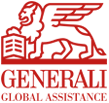Tips for Safe Driving on Vacation in Europe

Exploring Europe by car is one of the most rewarding ways to experience the continent’s diverse cultures, scenic routes, and off-the-beaten-path gems. But driving in Europe is not the same as driving in the U.S. or Canada—and misconceptions about road rules can turn your dream road trip into a stressful or expensive ordeal. To help you stay safe and confident behind the wheel, we’ve compiled essential tips, recent updates, and little-known regulations for driving across Europe.
Before You Go: Prepare for a Smooth Drive
Proper preparation can make all the difference. Here’s what you should do before hitting the road:
- Understand local road signs and symbols: Each country may have unique signage or use different shapes and colors for warnings and regulations. Look up a guide to European road signs specific to your destination.
- Check driver’s license requirements: Most European countries accept U.S. licenses for short visits, but some—like Italy or Austria—require an International Driving Permit (IDP).
- Review local traffic laws: Rules around passing, yielding, or turning differ by country. For instance, in France, drivers approaching from the right at intersections often have priority (known as priorité à droite).
- Study parking rules: Many cities have color-coded parking zones, restrictions for non-residents, and digital meters requiring local apps. Fines can be steep if you get it wrong.
- Plan your route ahead of time: Use apps like Google Maps or Waze, but also download offline maps in case of spotty service in remote areas.
Common Misconceptions About Driving in Europe
Many first-time travelers assume that driving in Europe is just like driving back home—but it’s not. Here are a few misconceptions to watch out for:
- “I can turn right on red.”
In almost all European countries, this is illegal unless specifically indicated by signage. Don’t assume you can turn just because the road is clear. - “All toll roads take credit cards.”
Not always true. While most do accept cards, some still require cash or pre-purchased vignettes (especially in countries like Switzerland, Austria, and Slovenia). - “It’s fine to drive anywhere in a rental car.”
Some rental agreements prohibit taking the car across borders without prior approval. Others might charge extra for driving into certain countries. - “I can drive anywhere in the city.”
Many European cities—like London, Milan, and Paris—have Low Emission Zones (LEZs) or congestion charges that restrict vehicle access or add fees. Entering these areas without proper registration can result in fines.
Essential Documents to Carry
Ensure you have the following documentation:
- Valid driver’s license and, if required, an International Driving Permit
- Passport and visa, if applicable
- Car rental agreement
- Vehicle registration (if driving your own car)
- Proof of insurance (including liability and breakdown coverage)
- Travel protection, especially one that includes rental car coverage and roadside assistance
Also read: Why Travel Insurance is a Smart Decision for a European Vacation
Updated Rules and Regional Requirements
Europe continues to refine road safety laws and environmental regulations. Here are a few recent updates and lesser-known requirements to be aware of:
- Low Emission Zones (LEZs): Increasingly common across Europe. London’s ULEZ (Ultra Low Emission Zone), Paris’s Crit’Air system, and similar programs require registering your vehicle and sometimes purchasing a vignette or sticker. Some older rental cars may not qualify.
- Daylight running lights/headlights: Mandatory at all times in many countries, including Scandinavia, Italy, and parts of Eastern Europe.
- Warning triangle and safety vests: Required in several countries. If you break down, you must wear a high-visibility vest before exiting the vehicle.
- Dashcams: While popular, they are restricted or banned in countries like Austria and Luxembourg due to privacy laws.
- Autobahn rules: In Germany, there are still no general speed limits on some parts of the Autobahn, though recommended speeds (known as Richtgeschwindigkeit) are typically around 130 km/h (81 mph). . However, However, running out of fuel on the Autobahn is considered a preventable offense and may result in fines or penalties.
When driving in Spain, France, and Italy, it's essential to carry specific safety equipment to comply with local laws and ensure your safety on the road. Here's a breakdown of the mandatory items required for each country:
Spain:
- Reflective Jackets: At least one reflective jacket is required, and it's advisable to have one for each passenger. These should be kept within the cabin, not in the trunk, so they can be worn before exiting the vehicle in case of a breakdown.
- Warning Triangles: Two reflective red warning triangles must be carried. In the event of a breakdown, place one in front of and one behind the vehicle. However, if your vehicle is equipped with a V-16 emergency light, the triangles are not necessary.
- Spare Wheel or Repair Kit: Vehicles must have a spare wheel and the necessary tools for replacement or, alternatively, a tire repair kit. This requirement does not apply to vehicles equipped with run-flat tires or similar technology.
France:
- Reflective Jackets: A high-visibility reflective jacket must be carried for each occupant and kept within the cabin.
- Warning Triangle: A warning triangle is mandatory and should be placed on the road 30 meters (about 100 feet) behind your vehicle in the event of a breakdown or accident.
- Crit'Air Sticker: All vehicles must display a Crit'Air vignette on their windscreen to drive and park in restricted traffic zones, such as permanent Low Emission Zones (ZFE). Not all vehicles are eligible for the vignettes; for instance, cars registered before January 1997 are ineligible and cannot be driven in these zones.
It's crucial to familiarize yourself with these requirements before driving in these countries to ensure compliance and safety.
Also read: Insurance for Rental Car Damage: Where to Get it and Things to Know
General European Driving Rules (That You Might Not Expect)
- Drive on the right-hand side (except in the UK, Ireland, Malta, and Cyprus).
- Seat belts are mandatory for all passengers.
- Hands-free only: Using a mobile phone while driving is strictly prohibited unless you’re using a legal hands-free device.
- Blood alcohol limits are very low: Many countries have limits close to 0.0%, especially for new drivers or professional drivers. Avoid drinking altogether if you plan to drive.
- Children must be in appropriate car seats based on their age, weight, and height. Double-check rental agencies can provide suitable child restraints.
Also read: 14 Things to do for Free in London—From Museums to Walking Tours
Additional European Driving Tips
- Avoid city centers if possible: Historic European cities often feature narrow streets, one-way systems, limited parking, and restricted zones. Consider parking outside and using public transportation to explore.
- Look out for cyclists: In cities like Amsterdam, Copenhagen, or even Paris, cyclists have priority, and not giving way can lead to fines or accidents.
- Long tunnels: Europe is home to some of the world’s longest tunnels. Stay calm, keep lights on, and follow distance rules.
- Expect road congestion in summer: July and August are peak travel months across the continent, especially on motorways heading to coastal destinations. Leave extra time for traffic delays or road construction.
- Tolls and vignettes: Many countries (e.g., France, Italy, Austria) charge tolls or require pre-purchased vignettes. Always double-check with your rental provider or national road authority.
- Carry local currency: Although many toll booths accept cards, rural tolls or smaller parking kiosks may not. Having coins or small bills on hand is wise.
Also read: 10 Things to do in Paris That You Can't Miss
Consider Travel Insurance for Road Trips
Driving in Europe can be a wonderful way to discover hidden gems, but unexpected mishaps—such as fender benders, parking fines, or canceled accommodations—can turn your adventure sideways. A travel protection plan, such as those from Generali Global Assistance, can offer peace of mind through:
- Rental Car Damage Coverage
- Emergency medical benefits
- Roadside Assistance
- Trip Interruption coverage
Also read: The Best Places in Germany to Visit: Top 12 Destinations
European road trips are iconic for a reason. From the Alpine roads of Switzerland to the sunny coastlines of Spain, the journey can be just as incredible as the destination. By knowing the rules, respecting local customs, and planning ahead, you’ll enjoy the ride—and reduce costly surprises.
Travel Resources
See more posts about Europe* The above tips are only provided for guidance and should not be solely relied upon as a comprehensive source of all European driving rules and regulations. All drivers are encouraged to familiarize themselves with all necessary local laws before driving in any country.
8456512505


